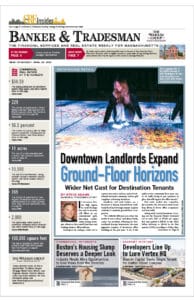
A rush to compare the failures of Silicon Valley Bank and Signature Bank to the Great Financial Crisis may be misplaced.
When writing about bank collapses, it’s generally not considered good form to pile on.
After all, there is a heavy psychological element to bank runs, so that last thing we want to do is contribute to the fear and panic.
That said, it now no longer seems like the collapse of Silicon Valley Bank will be a one-and-done deal, a cautionary tale of greedy management, lax oversight, and the interest rate shock, but nothing more.
The implosion at SVB, which had bet big on the life science and tech sectors and on the long-term durability of low interest rates, was followed in a matter of day or two by the shutdown by New York regulators of Signature Bank, another mid-sized lender that had abandoned caution – and common sense – by getting heavily involved in cryptocurrency.
But now it’s getting harder to write off these two banks as outliers, with Credit Suisse now in the hot seat, and, as of press time, First Republic being forced to plead with 11 other banks for a $30 billion rescue package to restore depositor confidence.
What We’re Looking At
The question now is whether we are looking at a full-blown, sector-wide banking crisis, or something more targeted, such as the collapse of the savings and loan sector in the late 1980s after a similar combination of greed-driven risk and hands-off government regulators led to disaster.
News commentary following the initial reports of SVB’s collapse quickly focused on finding an analogous event to compare it to.
One NPR reporter even compared Silicon Valley Bank’s quick fold to that of Bear Stearns in March 2008 under the weight of its investments in toxic mortgage-backed securities as the housing market buckled under a wave of foreclosures.
The collapse of that prestigious investment bank is often seen as a precursor to failure, several months later in September 2008 of Lehman Brothers, which triggered a financial crisis on par with the stock market failure of 1929 that ushered in the Great Depression.
Implying that SVB’s demise and the problems that caused it are of the same magnitude as the constellation of once-in-a-generation triggers and forces that led to the Great Recession is a stretch, and a big one to say the least.
For starters, the financial crisis that led to the Great Recession had a very clear trigger – millions of shoddy, subprime mortgages that formed a ticking time bomb, ready to go off when the real estate market, as it inevitably always does, started to cool.
The packaging and resale of these mortgages as securities on Wall Street ensured that when things blew up, the damage would spread far beyond local real estate markets and wreak havoc with the banks and other financial institutions.
No Obvious Spark
That begs the question: What’s the trigger now? And the answer is that there is no obvious, broad economic trigger lurking just beneath the surface on which the failure of SVB, Signature, and now possibly First Republic as well can be blamed.
Maybe Silicon Valley Bank was reckless with its heavy concentration on the fast-growing, but risky, group-think-prone and at times boom-and-bust tech and life sciences sectors. Certainly, Signature Bank was off its rocker to have gotten involved with cryptocurrency.
And at least in the case of SVB, that bet backfired when companies in both sectors were forced to retrench. Having invested heavily in government-backed bonds, which fell in value when interest rates started to spike, Silicon Valley Bank was forced to sell its holdings in order to keep up the increased burn rates – and drawdown of their cash reserves – by its biggest customers.
But with those interest rates still moderate by historical standards, the unpleasant week triggered by SVB’s sudden shutdown lacks the Main Street/Wall Street nexus that made the 2008 financial crisis such an existential threat to the global economy.
By contrast, the current banking mess, as damaging as it is, appears more likely to be confined to a certain segment of banks that bet too heavily on one sector.
S&L Crisis a Better Fit
If there are similarities to past banking disasters, the savings and loan debacle of the late 1980s would be a better fit.
Like how it freed regional banks like SVB from parts of Dodd-Frank regulations in 2018, Congress back in the Reagan years scaled down oversight of savings and loans institutions and gave them a green light to dive into what was then a red-hot real estate market.

Scott Van Voorhis
The S&L sector did just that, and then proceeded to fail spectacularly as home prices and the mortgage market went from boom to bust by the end of the decade.
The federal government responded by forming the Resolution Trust Corp., which from 1989 to 1995 took over and resold the assets of hundreds of failed financial institutions.
Of course, at this point, the banking issues surfaced by SVB’s sudden failure are nowhere near the level of the S&L crisis, let alone a repeat of the Great Financial Crisis of 15 years ago.
But the relatively happy ending to the savings and loan debacle does provide an example of how resolute action by federal and state regulators, along with cooperation and coordination among financial sector’s top players, can go a long way towards defusing what otherwise could have been an economy-shattering development.
So no, while things look tough right now, the sky is not falling on the banking industry. And with a little luck, that’s the way it will stay.
Scott Van Voorhis is Banker & Tradesman’s columnist; opinions expressed are his own. He may be reached at sbvanvoorhis@hotmail.com.





